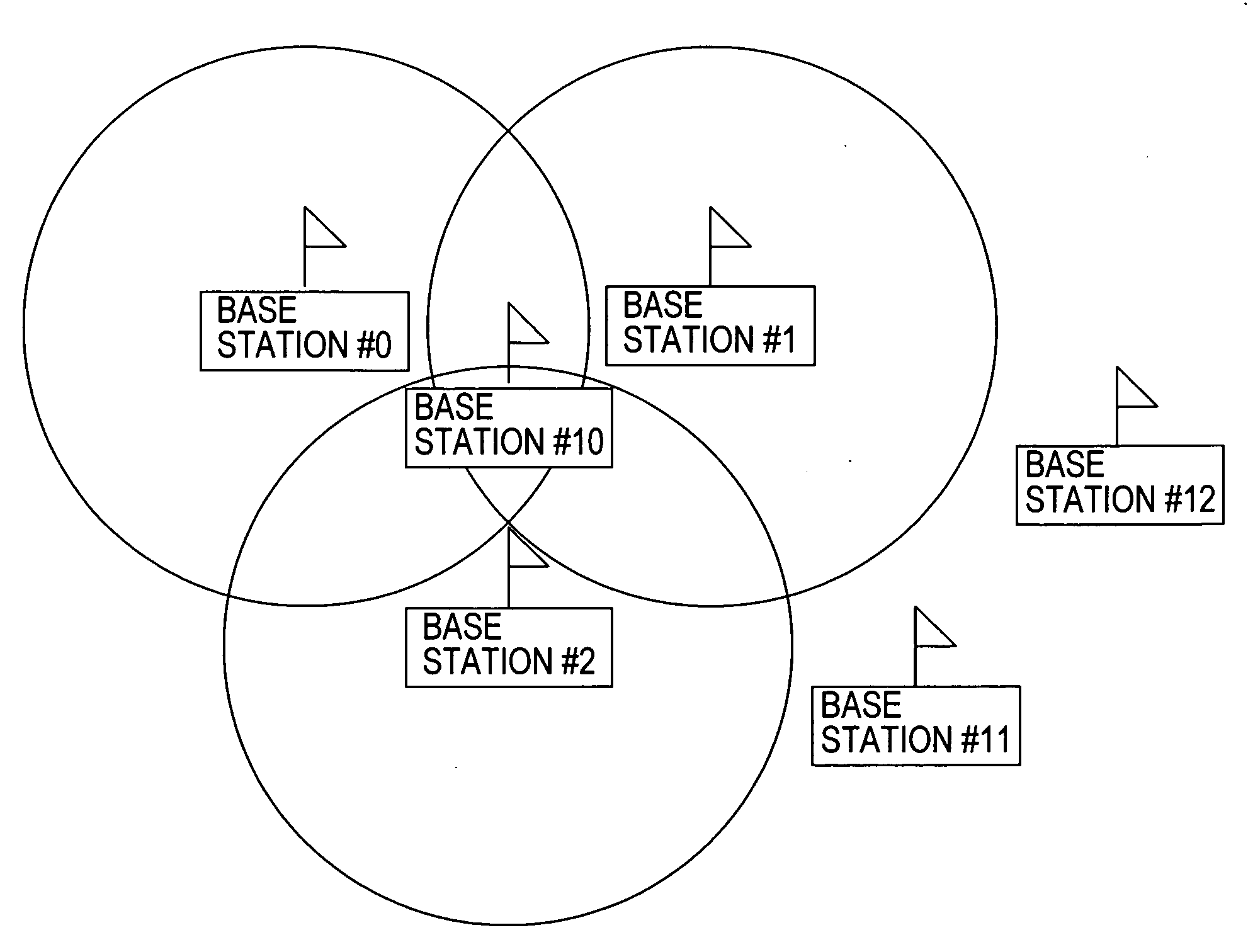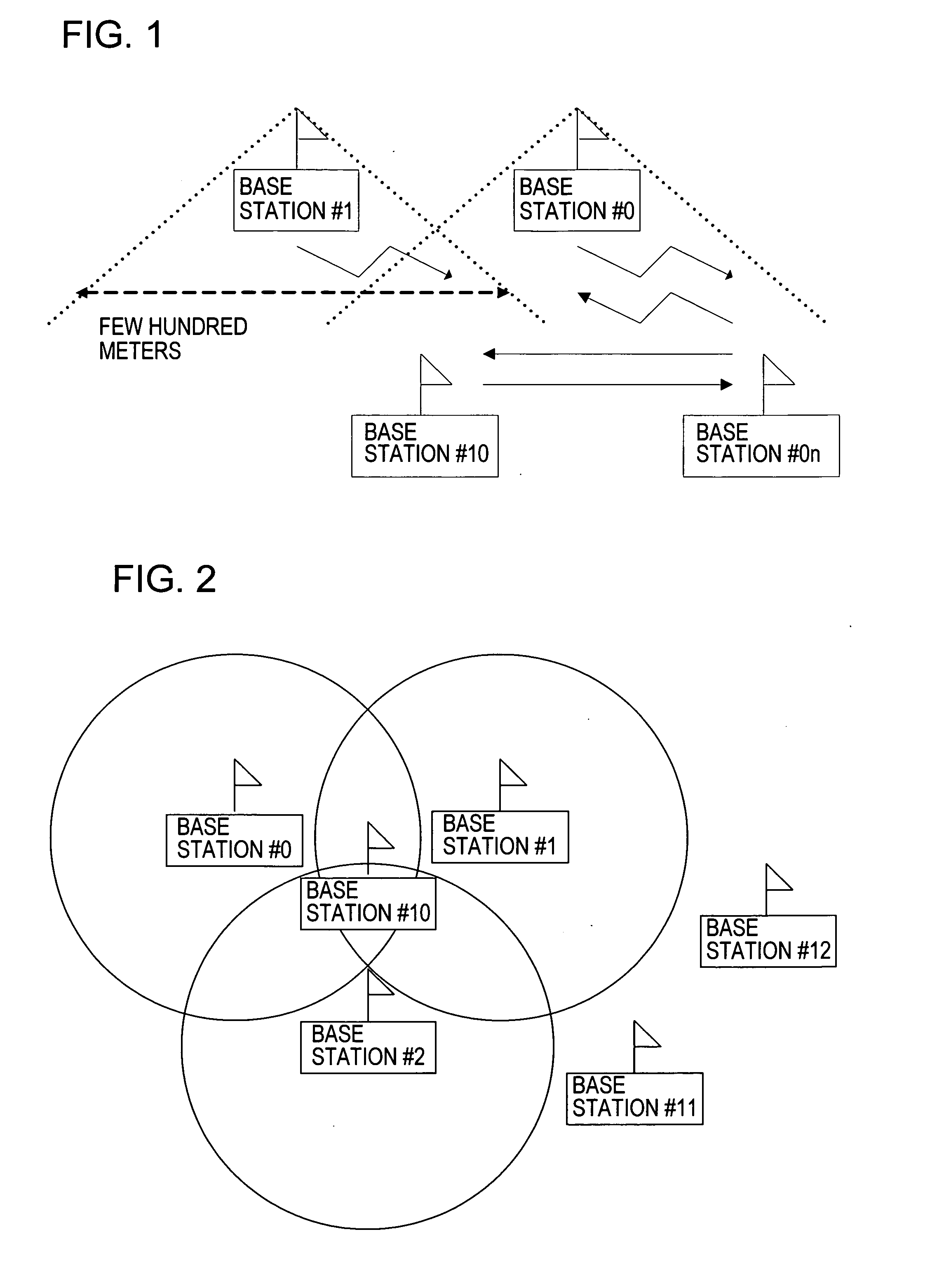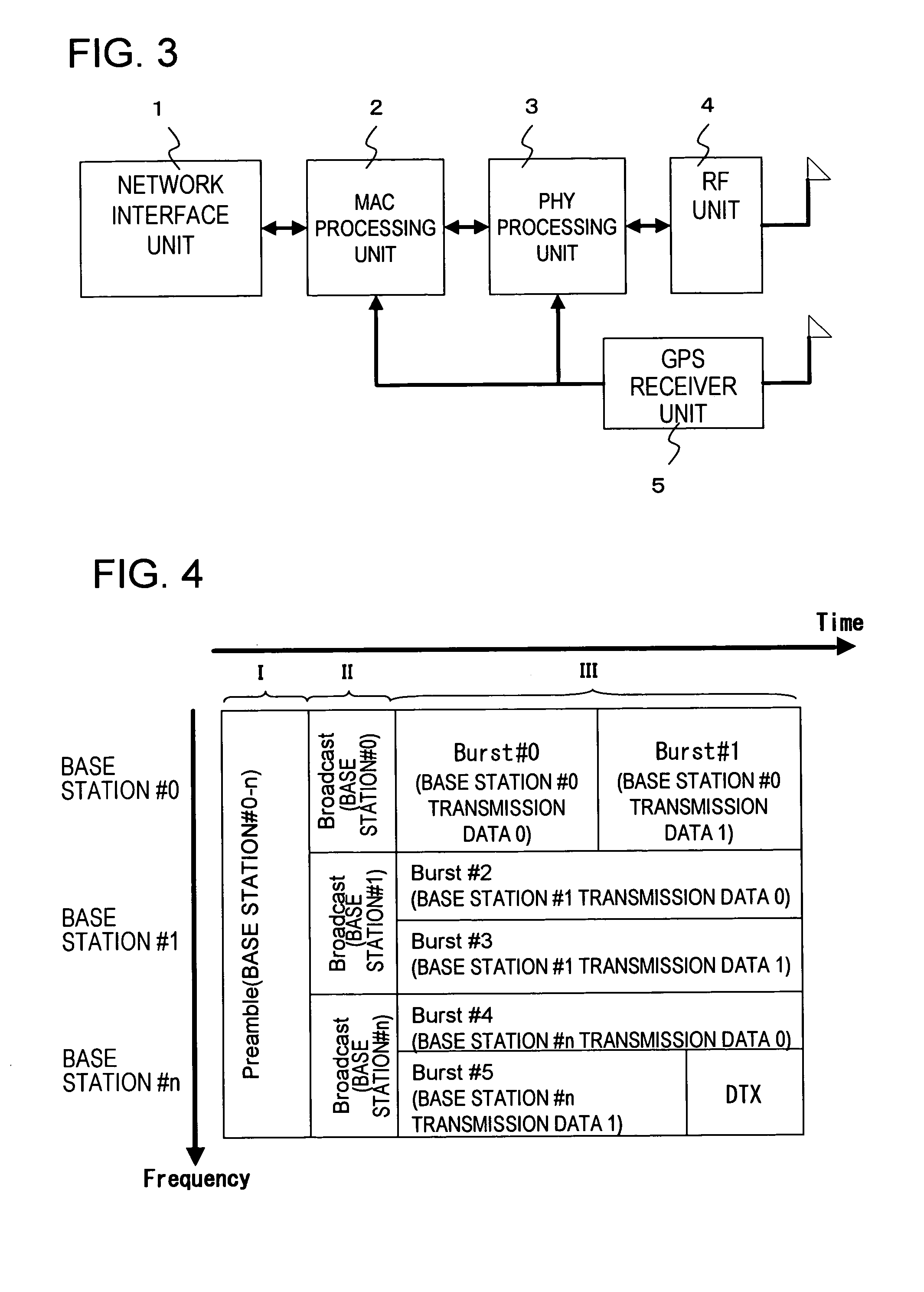Communication system
a communication system and communication technology, applied in the field of communication systems, can solve the problems of wasteful use of lines and inability to reliably perform communication when communication, and achieve the effect of reducing setup time and enabling communication in a small area
- Summary
- Abstract
- Description
- Claims
- Application Information
AI Technical Summary
Benefits of technology
Problems solved by technology
Method used
Image
Examples
first embodiment
[0053]FIG. 4 is an example of a signal frame format corresponding to the first embodiment and is compliant with the WiMAX standard. The IEEE 802.16-2004 standard relating to the WiMAX uses a modulation mode of the orthogonal frequency division multiplexing (OFDM) mode to use a method of temporally dividing a frequency band used for each piece of data.
[0054]On the other hand, the IEEE 802.16e standard relating to the mobile broad band system uses the orthogonal frequency division multiple access (OFDMA) mode to divide a frequency band used for each piece of data not only temporally in accordance with the OFDM mode but also by sub-carriers.
[0055]As shown in FIG. 4, in the frame format of the OFDMS physical layer, logical numbers of sub-channels are assigned to a frequency-axis direction of the vertical axis and numbers of OFDM symbols are assigned to a time-axis direction of the horizontal axis.
[0056]One frame includes a preamble I, a broadcast message II including a frame control hea...
second embodiment
[0085]In the second embodiment, by adding the uplink, both broadcast and individual communication can be transmitted and received at high speed.
[0086]A format shown in FIG. 13 is an example of a signal frame format corresponding to a third embodiment according to the present invention. FIGS. 14 and 15 are block diagrams of a base station configuration example and a terminal apparatus configuration example that are applied to the third embodiment using the frame format shown in FIG. 13. FIG. 16 is a diagram of an operation flow of the third embodiment.
[0087]The third embodiment is characterized in that the uplink section is switched to a WiMAX uplink and an IEEE 802.11-based line in the second embodiment. The WiMAX uplink is the same as the description of the second embodiment. The IEEE 802.11-based line is utilized for wireless LAN connection between the terminal apparatuses.
[0088]In FIG. 13, the WiMAX standard format period I and the IEEE 802.11 standard format period II are shown ...
third embodiment
[0095]The operation of the apparatus configuration of the third embodiment will be described with reference to a process flow of FIG. 16.
[0096]In both the base station and the terminal apparatus, the GPS receiver unit 5 acquires GPS synchronization time information (steps S40a to 40c), which is used as the WiMAX-based reference time (steps S41a to 41c). Therefore, the WiMAX-based communication area and the 802.11-based communication area can be switched at the timing synchronized with a GPS system.
[0097]In FIG. 16, if the WiMAX basis is applied to both the uplink and the downlink (periods of I and III of FIG. 16), the operation is the same as the second embodiment.
[0098]On the other hand, if the WiMAX-based communication area is used in the downlink direction and the 802.11-based communication area is used in the uplink direction (period of II of FIG. 16), the 802.11-based reference time is used based on the GPS synchronization time information S40a (steps S42a to 42c).
[0099]The dow...
PUM
 Login to View More
Login to View More Abstract
Description
Claims
Application Information
 Login to View More
Login to View More - R&D
- Intellectual Property
- Life Sciences
- Materials
- Tech Scout
- Unparalleled Data Quality
- Higher Quality Content
- 60% Fewer Hallucinations
Browse by: Latest US Patents, China's latest patents, Technical Efficacy Thesaurus, Application Domain, Technology Topic, Popular Technical Reports.
© 2025 PatSnap. All rights reserved.Legal|Privacy policy|Modern Slavery Act Transparency Statement|Sitemap|About US| Contact US: help@patsnap.com



